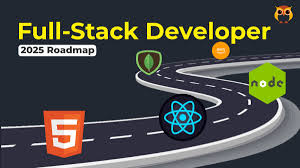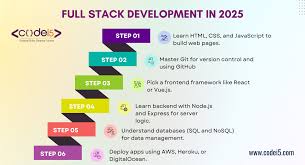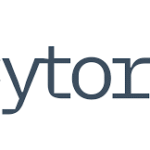Full-Stack Engineer Roadmap 2025: Skills, Tools & Technologies.
Introduction to Full-Stack Engineer roadmap.
In the modern digital world, a full-stack engineer plays a crucial role. These highly skilled individuals are versatile and proficient in both creating user-friendly interfaces and handling server-side processes. As companies increasingly rely on advanced web applications and cutting-edge software, full-stack development is in high demand. What does it truly require to succeed as a full-stack developer? The constant emergence of new technologies and swiftly changing trends can make this career path seem daunting. That’s where our thorough roadmap for 2025 comes into play. Whether you’re a beginner or striving to enhance your abilities, grasping the fundamental tools and technologies will give you the confidence to tackle this journey.
Are you prepared to venture into the thrilling world of full-stack engineering? Let’s analyze the necessary skills, available tools, and future prospects in this dynamic field. As our digital world continues to evolve at a rapid pace, the importance of full-stack engineers grows even more. These highly skilled individuals possess a diverse range of abilities, effortlessly moving from creating visually appealing interfaces to delving into intricate server-side processes. With modern companies relying heavily on sophisticated web applications and cutting-edge software, full-stack development has become a highly sought-after skillset.
The Growing Demand for Full-Stack Engineer roadmap.
As technology continues to advance at a rapid pace, the demand for adaptable professionals has also grown. In particular, full-stack engineers are playing a crucial role in the ongoing shift towards digital platforms within businesses. These developers have a diverse skill set that spans both frontend and backend technologies. This unique combination enables them to efficiently create comprehensive solutions that cater to various needs. Their talent for handling projects from start to finish is highly valued by companies.
Additionally, both startups and established enterprises are acknowledging the benefits of utilizing full-stack teams. These teams help to streamline processes by decreasing reliance on various specialists, thereby promoting a more agile approach to project execution. As stated in industry reports, the need for full-stack developers is expected to increase significantly in the upcoming years. With the growth of cloud computing, this demand is further reinforced as it necessitates proficient individuals capable of seamlessly navigating through different layers of application infrastructure. With the constant emergence of innovative tools, it’s a thrilling period for those entering the field or seeking to improve their skills.
Essential Skills for a Full-Stack Engineer Roadmap.
For a full-stack engineer, versatility is key. Mastery of HTML, CSS, and JavaScript is essential for creating dynamic front-end experiences, while familiarity with frameworks such as React or Angular further strengthens this ability. Regarding the backend, proficiency in server-side programming languages like Node.js, Python, or Ruby is crucial. Acquaintance with databases, including both SQL and NoSQL varieties, allows for effective handling and retrieval of data. Git, along with other version control systems, plays a crucial role in team collaboration by efficiently facilitating code management over extended periods.
It’s important not to underestimate the value of soft skills. Possessing a strong problem-solving ability enables engineers to successfully handle intricate obstacles. Additionally, effective communication skills promote clear and smooth interactions among team members and stakeholders. In the ever-evolving world of technology, familiarity with cloud computing platforms significantly enhances the ability to deploy applications and adapt to changing demands for scalability in 2025.
Tools and Technologies Used in Full-Stack Development.
Full-stack development utilizes a range of tools and technologies to empower developers in constructing interactive web applications. Popular frameworks such as React and Angular are commonly employed on the frontend for designing user interfaces, providing opportunities for developers to fashion visually appealing experiences. Node.js is a popular option for backend development because it can handle multiple requests at once. When combined with databases such as MongoDB or PostgreSQL, it offers strong solutions for managing data.
Git, along with other version control systems, is crucial for facilitating teamwork by efficiently tracking code modifications. To optimize deployment and scalability, cloud computing platforms such as AWS or Azure provide adaptable resources specifically designed for full-stack applications. By combining these technologies, a robust ecosystem is created where both frontend and backend functionalities can coexist seamlessly. Cloud computing platforms such as AWS or Azure provide versatile resources designed specifically for full-stack applications, making them ideal for deployment and scalability. By incorporating these technologies, a robust ecosystem is created where both frontend and backend functionalities can seamlessly thrive.
The Future of Full-Stack Engineer Roadmap: Trends and Predictions for 2025.
The full-stack engineering field is quickly evolving and is expected to experience a drastic increase in demand for developers who possess skills in artificial intelligence and machine learning by 2025. These developers will be responsible for integrating these cutting-edge technologies into various web applications. As low-code and no-code platforms continue to rise in popularity, we can expect to see increased involvement from a wider range of individuals in app development. This shift may also result in traditional coding skills being focused on better collaboration with non-technical team members.
The significance of cloud computing will continue, as serverless architectures become increasingly popular. This method streamlines deployment and scaling processes, while also minimizing maintenance requirements. Moreover, with the increasing focus on security, it is imperative for full-stack engineers to prioritize secure coding practices from the inception of their projects. Additionally, there will be a heightened emphasis on DevOps culture as teams strive for smooth integration between development and operations. The current trend of remote work is here to stay. There may be increased opportunities for full-stack engineers on a global scale, without being constrained by geographical limitations impacting their job prospects.
Advantages and Challenges of Being a Full-Stack Engineer.
As a full-stack engineer, you have many benefits. Your diverse range of abilities allows for more job options and the opportunity to work on both frontend and backend tasks, making you a valuable member of any team. This adaptability also opens doors for advancement in your career. In addition, the potential for increased salaries is a boon. Employers highly regard engineers who possess the ability to connect various levels of development, resulting in attractive compensation plans.

Despite the rewarding aspects of this role, there are also some challenges. The fast-changing technology industry demands continuous learning and flexibility. Staying updated on emerging frameworks and libraries can be daunting. Moreover, handling a multitude of tasks could result in exhaustion if not properly handled. Striking a harmonious blend of design aesthetics and server-side logic requires time management and prioritization abilities that can take several years to master proficiently.
Tips for Aspiring Full-Stack Engineers.
Begin with the fundamentals. Gain comprehension of both frontend and backend technologies. Focus on mastering HTML, CSS, and JavaScript initially as they serve as the building blocks of web development. Next, delve into popular frameworks such as React or Angular for frontend development, and consider Node.js or Django for your backend needs. These are all excellent options to explore. By regularly building real-world projects, you can enhance your skills and develop a standout portfolio that will impress potential employers.
Start familiarizing yourself with version control systems, such as Git, at an early stage. Collaboration is crucial in all development environments, and having a grasp on efficient code management is essential. Remember to prioritize soft skills. Strong communication and problem-solving skills can differentiate you from other applicants.Get involved in both virtual communities and in-person meetups centered on all aspects of full-stack development. Connecting with others can potentially open up doors for mentorship and job recommendations.Maintain your interest in new and upcoming technologies, such as cloud computing, that may be relevant for full-stack developers in the year 2025. It’s important to keep up with the ever-changing tech landscape in order to thrive.
Conclusion.
The path towards becoming a full-stack engineer is filled with excitement and fulfillment. In the ever-changing world of technology, a defined plan can assist in acquiring the required abilities, resources, and advancements that will shape the year 2025. As companies rely more on adaptable developers who can tackle both frontend and backend difficulties, the significance of full-stack engineers continues to rise. Acquiring knowledge in cloud computing is crucial for safeguarding your career in this field. The need for full-stack development is increasing, driven by advancements in technologies like AI and machine learning. Proficiency in these areas will give you a competitive edge in the job market.
In addition, there are multiple benefits to being a full-stack developer, including increased pay and exposure to various projects. However, it is crucial to consider potential obstacles, such as continuously adapting to new technologies and balancing workload. Prioritizing ongoing education will play a significant role. Newcomers or those seeking to advance their skills can distinguish themselves in the field by honing their expertise in web development frameworks and implementing best practices. As you work towards becoming a full-stack engineering expert by 2025, make sure to stay updated on new trends while also sharpening your fundamental skills that are essential for success. This well-rounded approach will not only equip you for current market needs, but also set you up for potential advancements in the ever-evolving industry.






